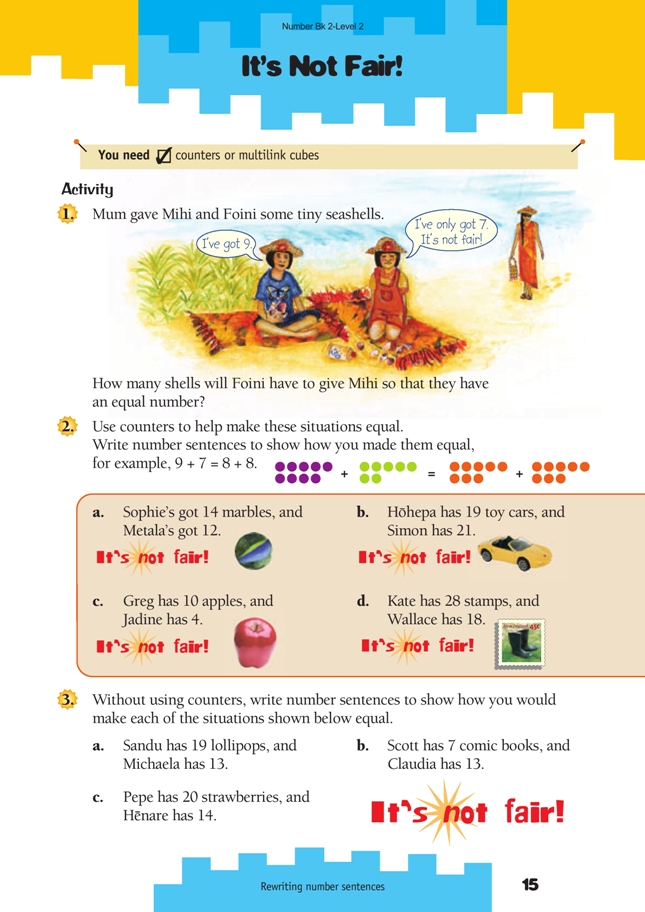This is a level 2 algebra activity from the Figure It Out series.
A PDF of the student activity is included.
Click on the image to enlarge it. Click again to close. Download PDF (182 KB)
write a number sentence
counters or multilink cubes
This activity is designed to have students regroup two numbers as equal amounts. Initially they can do this by making collections and balancing them by progressively moving counters from the larger number to the smaller number.
Use equipment to model question 1 and role-play what the students think they could do to make it fair. When the number of shells is balanced, ask the students which total is bigger or whether they are the same: 7 + 9 or 8 + 8? It’s important that the students see that the total has remained the same.
Modelling using a balance is another effective way to show that the two quantities are equal. Once you have modelled with a real balance scale, you could draw balances and ask the students to write on them.
In question 3, the students are asked to balance the numbers without using counters, and so they need a strategy to do this. If you model question 3a, the students will see that three lollipops need to be moved from 19 to 13 so that both children have 16. You could explain to the students that 19 is 3 more than 16, and 13 is 3 less than 16. “The difference between 19 and 13 is 6. Half this difference is 3. If we then subtract half from the larger number and add half to the smaller number, we will get 16 and 16, which is balanced.”
This strategy can be applied to other questions, for example, question 3b:
7 and 13: The difference is 6.
Half the difference is 3.
7 + 3 = 10 and 13 – 3 = 10
10 + 10
Answers to Activity
1. 1
2. a. 14 + 12 = 13 + 13
b. 19 + 21 = 20 + 20
c. 10 + 4 = 7 + 7
d. 28 + 18 = 23 + 23
3a. 19 + 13 = 16 + 16
b. 7 + 13 = 10 + 10
c. 20 + 14 = 17 + 17

